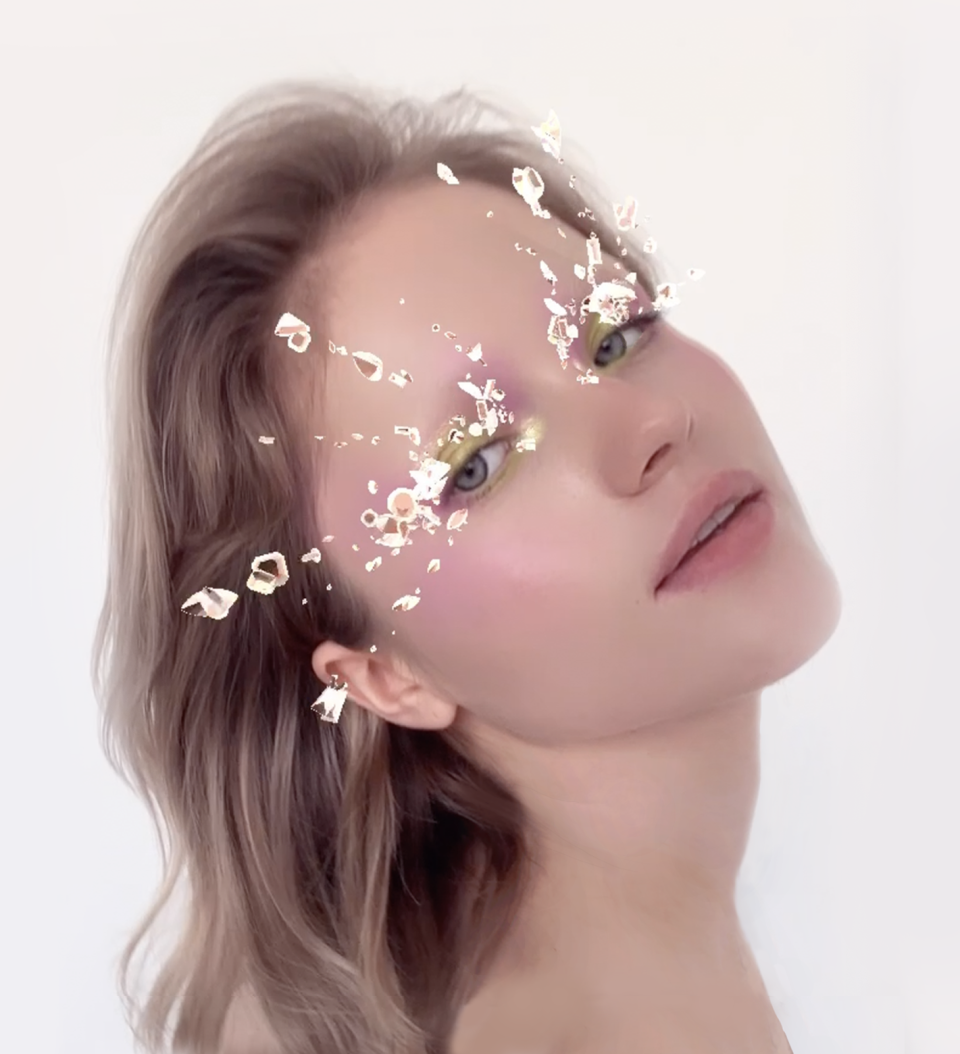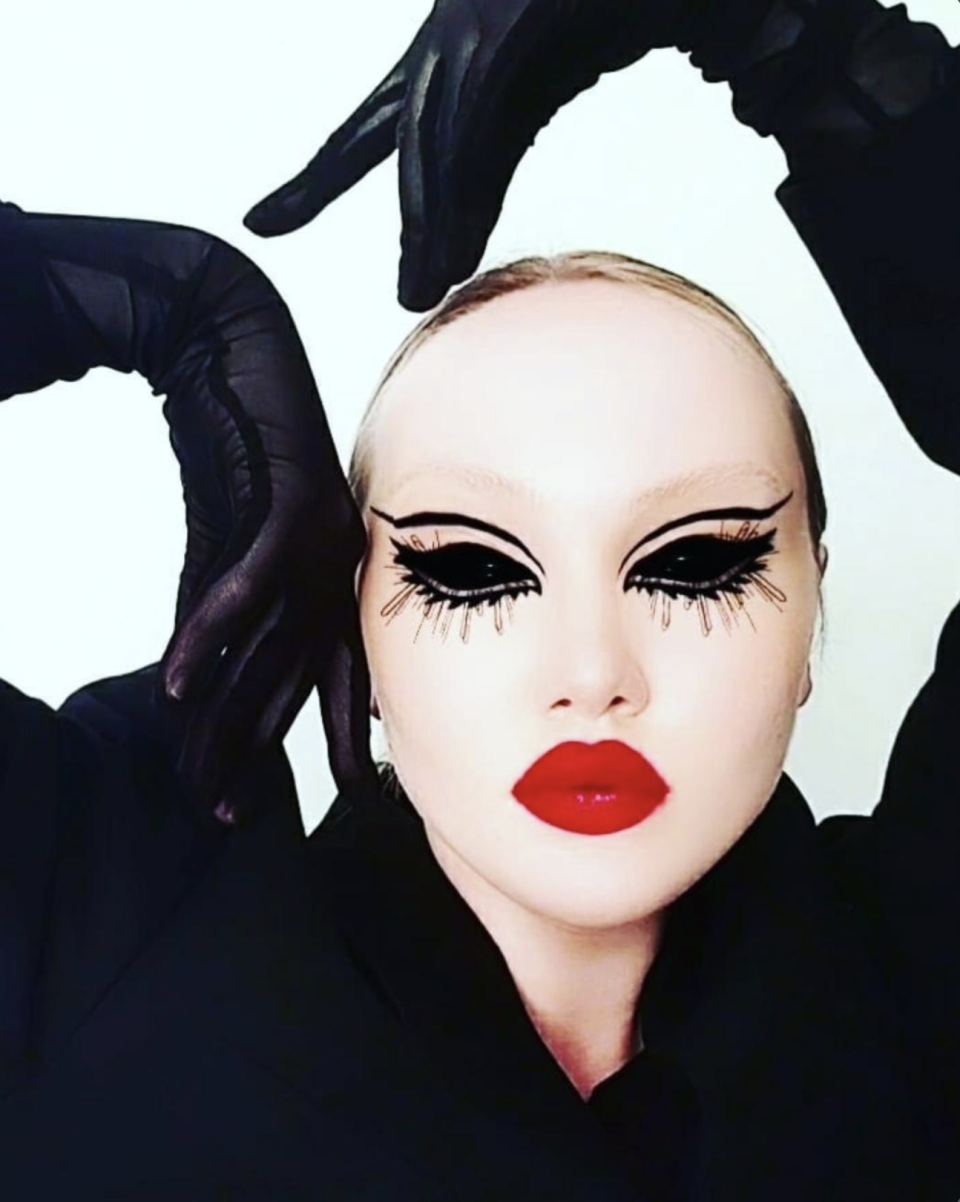Makeup Artist Sofi Chernyak Didn’t Believe in the AR Beauty Revolution — Then She Founded Her Own Social Media Filter Studio

Sofi Chernyak doesn’t make filters — she builds worlds.
The MaquillAR Studio founder and creative director is the kind of visionary that can take a gold-packaging-encased Valdé Beauty lipstick and create from it a shimmering, oasis-inspired virtual landscape which manages to not only evoke the product’s physical appearance in an immersive way, but adds a female empowerment-focused story that can be explored and felt by anyone who comes across the Instagram filter.
More from WWD
Founded in 2021, MaquillAR combines Chernyak’s longtime experience as a makeup artist, her bachelor’s degree in art history and studio art, and unwavering resolve to create social media filters that are “creatively good,” or in other words, don’t rely on face-altering technology to make their mark.
The studio has launched filter collaborations with brands such as LYS Beauty, Jeanine Lobell’s Neen and Lashify, as well as renowned makeup artists Val Garland and Erin Parsons. To date, MaquillAR’s Instagram and TikTok filters have garnered more than 66 million impressions worldwide and have been utilized by social media users hundreds of thousands of times — and the studio is just getting started.
In an interview with Beauty Inc, Chernyak chats about her experience navigating the AR and AI filter creation space, and assesses the evolution of the digital beauty sphere.
When did you first realize the opportunity of the AR and AI beauty space?
Sofi Chernyak: At first, I was skeptical of the space — I didn’t think it was anything great. It wasn’t until Meta released its Spark AR studio tool in 2017 that my journey [with AR] truly began. One of my favorite aspects of being a makeup artist in fashion was the collaborative aspect of the work, and that’s something I wanted to bring into the digital realm; unlocking a tool that enables your art to be experienced on multiple faces, rather than just one model, is a phenomenal thing.
How do you approach creating filters for brands, and what characteristics of a filter maximize organic adoption by social media users?
S.C.: The way we figure out what we can do for a brand is simply asking: “What is your brand about?” Once we understand that, we’re able to dissect what actually matters to their community, and build a story around that. A lot of people nowadays identify as creators, even if they are very micro in their following, and so creating gamified filters works very well for this creator community because it answers their main problem of, “What do I make a reel about today?” or “What should my next TikTok be?”

How long does it take to bring a filter from ideation to execution?
S.C.: It depends on the complexity, but usually between two weeks and two months. If an idea is relatively familiar or simple, like with some makeup look filters, those tend to be faster. When we’re building a world, there tends to be a lot more conversation and creative and strategic adjustments made with the client.

Do you have a favorite filter collaboration you’ve embarked on?
S.C.: We recently did a Halloween-themed collaboration with YouTuber Safiya Nygaard, and it was a fantastic effort on many levels. We were able to reach such a wide audience through her channel, and it was extremely fun to see this fantastic army of people co-create an experience with us. Over 130,000 [TikTok] videos have been created with the filter; it was emotionally rewarding to engage so many people and empower them to feel more at ease with the idea of digital makeup, as well as self-expression in the space.
As the AR filter space continues to grow, how can brands differentiate themselves?
S.C.: I think differentiation will always come from the core of what a brand stands for. Consumers’ expectations of brands are very high right now — they want brands to be socially and politically active, and loudly support causes like inclusivity and female empowerment. This can pose a challenge for some larger brands that have been in the market for a while, and now have to reinvent themselves and truly seem authentic in doing that even if [those values] are not something that was previously part of their core messaging. It’s not that brands necessarily need to rely on AR as a differentiator, but rather, their core values are their differentiator, and AR is one means through which they can amplify those.
There has been much discourse recently regarding the potential harm of face-altering filter technology. How is MaquillAR accounting for these concerns?
S.C.: This is something I think about all the time. When I started MaquillAR, I wanted to create filters that are exciting by themselves, and luckily, most brands also want to avoid the potential harm of face-altering effects to their communities. We avoid making filters that alter your face in a way that makeup couldn’t; we want to inspire people through creative projects that are much more about artistic exploration than hiding who you are.

Might MaquillAR play in the metaverse any time soon?
S.C.: We’re not selling metaverses to clients just yet. I believe the metaverse will be very successful, but that the visuals that are currently driving users to the space are not what will be the ultimate driver of its success. I came up with a term — meta-Baroque — to describe what I think is happening in the metaverse right now, in which there’s almost such a desperation to create excitement about the space that brands are using these oversaturated colors and elements to draw people, and that desperation actually signifies the fact that it’s not working yet. Once this rush to become faster, to be the first and the best, shifts, we’ll come to a much more organic, thought-out and relaxed building space, and that’s probably when MaquillAR will join the metaverse.
Best of WWD

